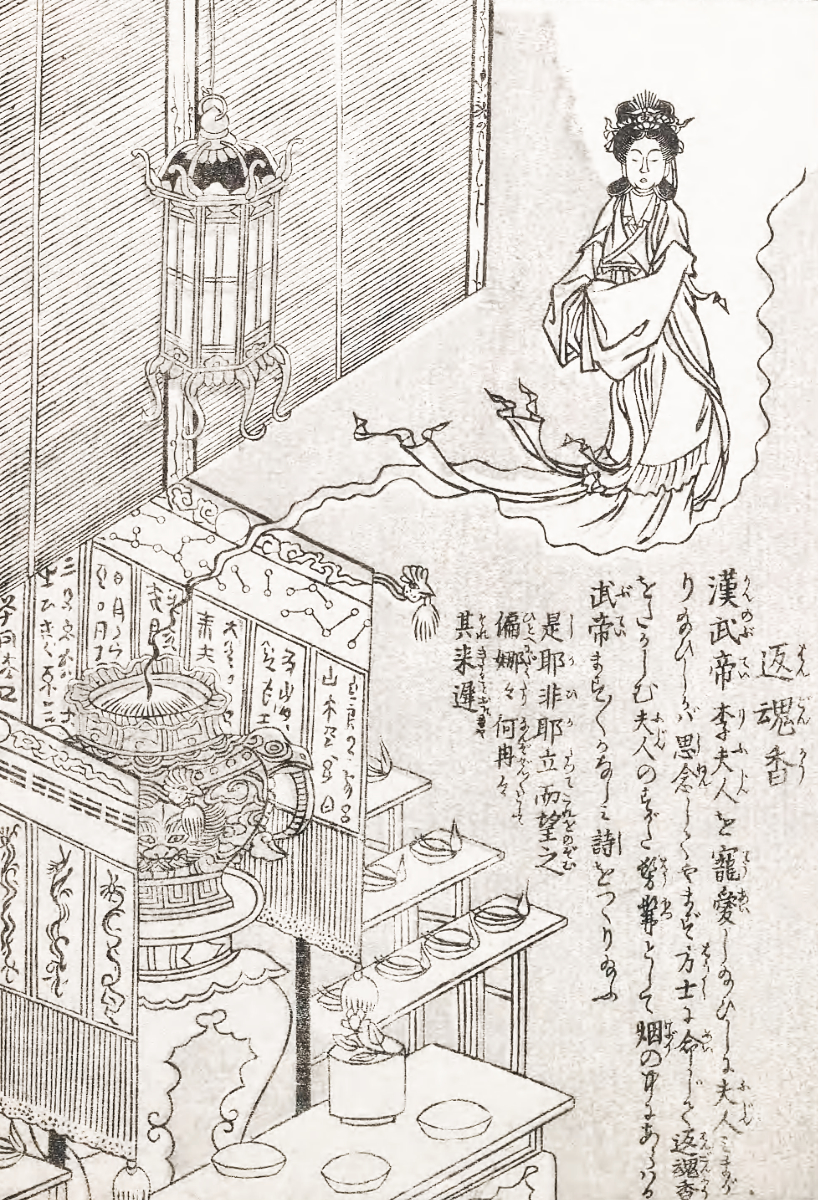Hangonkō is a legendary incense from ancient China which has the power to bring forth the spirits of the dead before those who burn it. Those who burn the incense will see the spirits of the dead within the smoke. Hangonkō is made from the hangonjū, a magical tree with leaves and flowers that resemble those of a maple or Japanese oak. Its smell can be picked up from over 100 ri away. To make hangonkō, you steam the hangonjū’s roots until the sap comes out. Then you knead the sap to make the incense. Even a small piece of this resin is strong enough to recall the spirits of those who died from sickness or disease. There is a catch, however. Hangonkō only returns the spirit for a short time, and they only exist within the smoke of the burning incense. All of the variations of the story share the same moral: after the person uses the incense to meet their lover’s spirit, it only leaves them sadder and more grieved than they were before. Hangonkō doesn’t alleviate their loneliness, it makes it worse. This story is an allegory. Smoke can be a symbol of delusion, such as attachment to the material world, or the inability to let go of a loved one after death. In Buddhism, this delusion is the ultimate cause of all suffering. The smoke of this incense prevents people from properly letting go of their loved ones and moving on. They’re stuck in the past, in a delusion, and will be forever miserable unless they learn to let go.
| Alias Hangonkō (反魂香, 反魂香) |
| Real Names/Alt Names “Spirit calling incense” |
| Characteristics Yōkai, Enlightenment and Neoclassicism, Chinese, Japanese |
| Creators/Key Contributors Toriyama Sekien, ○ |
| First Appearance Japanese folklore |
| First Publisher ○ |
| Appearance List Konjaku Hyakki Shūi (今昔百鬼拾遺, “Supplement to The Hundred Demons from the Present and the Past”, c. 1781) Vol. 1 “Cloud” |
| Sample Read Konjaku Hyakki Shūi Vol. 1 “Cloud” (c. 1781) [Smithsonian] |
| Description Hangonkō is a legendary incense from ancient China which has the power to bring forth the spirits of the dead before those who burn it. Those who burn the incense will see the spirits of the dead within the smoke. Hangonkō is made from the hangonjū, a magical tree with leaves and flowers that resemble those of a maple or Japanese oak. Its smell can be picked up from over 100 ri away. To make hangonkō, you steam the hangonjū’s roots until the sap comes out. Then you knead the sap to make the incense. Even a small piece of this resin is strong enough to recall the spirits of those who died from sickness or disease. There is a catch, however. Hangonkō only returns the spirit for a short time, and they only exist within the smoke of the burning incense. All of the variations of the story share the same moral: after the person uses the incense to meet their lover’s spirit, it only leaves them sadder and more grieved than they were before. Hangonkō doesn’t alleviate their loneliness, it makes it worse. This story is an allegory. Smoke can be a symbol of delusion, such as attachment to the material world, or the inability to let go of a loved one after death. In Buddhism, this delusion is the ultimate cause of all suffering. The smoke of this incense prevents people from properly letting go of their loved ones and moving on. They’re stuck in the past, in a delusion, and will be forever miserable unless they learn to let go. |
| Source Hangonkō – Yokai.com |

